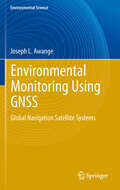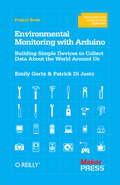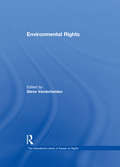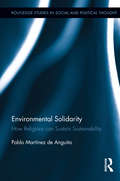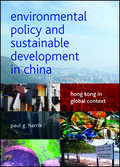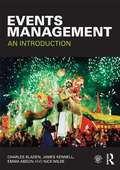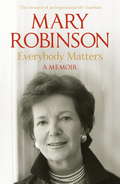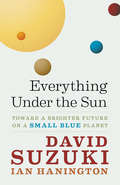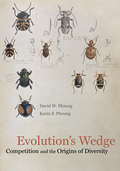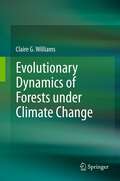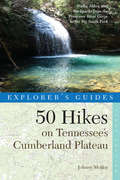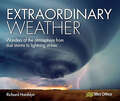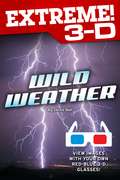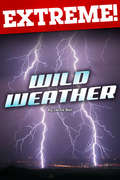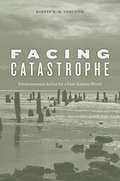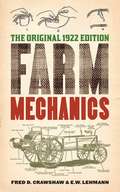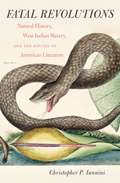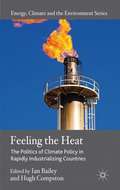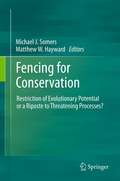- Table View
- List View
Environmental Monitoring using GNSS
by Joseph L. AwangeGlobal Navigation Satellite Systems (GNSS) are revolutionizing the world in a way their original developers never envisaged. From being military "war" tools, GNSS satellites are rapidly becoming "peace" tools that play a potentially critical role in enabling changing environmental phenomenon that do not permit direct measurements to be remotely observed via their all-weather, highly accurate and continuously updatable positional time series. This is evident, for example, in their use in emerging environmental monitoring methods that are considered in this book. These include: GPS-based radio telemetry, which is enhancing ecological and conservation monitoring by more accurately mapping animal movements, their behaviours, and their impact on the environment; GNSS-meteorology, which is contributing to weather and climate change studies; GNSS-remote sensing, which, for example, allows the rapid monitoring of changes in fresh water resources and cryosphere; Geosensor network techniques, which are earning a crucial role in disaster response management; Epidemiology, for improved efficiency in tracking and studying the spread of infectious diseases and climate change effects on vector-borne diseases; and Economics, to provide data for the econometric modelling of casual impact of policies. In Environmental Impact Assessments (EIA), Strategic Environmental Assessments (SEA), and Sustainability Assessments (SA), GNSS, together with other spaced-based remote sensing techniques, are emerging, not only as modern tools that connect the developers to the community, but also provide information that support Multi-Criteria Analysis (MCA) methods, which inform decision making and policy formulations. By bringing the two fields of geodesy (the parent of GNSS technology) and environmental studies (potential users of this technology), this book presents the concepts of GNSS in a simplified way that can, on the one hand, be understood and utilised by environmentalists, while on the other, outlines its potential applications to environmental monitoring and management for those engaged more with its technology, which hopefully will further energise the already innovative research that is being carried out. Lastly, this book is most relevant to all the professionals whose work is related to the environment such as hydrologists, meteorologists, epidemiologists, economist, and engineers, to name just a few.A comprehensive yet candid and compelling presentation of Global Navigation Satellite Systems and its application to environmental monitoring and a host of other socio-economic activities. This is an essential and new ground breaking reading for all professional practitioners and even academics seeking to study and become involved in using Global Navigation Satellite Systems in diverse fields ranging from environmental monitoring to economic activities such as monitoring weather and climate in order to design crop failure insurance. Nathaniel O. Agola, Professor of Business and Financial Economics, Ritsumeikan University, Japan
Environmental Monitoring with Arduino: Building Simple Devices to Collect Data About the World Around Us
by Emily Gertz Patrick Di JustoAfter the devastating tsunami in 2011, DYIers in Japan built their own devices to detect radiation levels, then posted their finding on the Internet. Right now, thousands of people worldwide are tracking environmental conditions with monitoring devices they’ve built themselves. You can do it too!This inspiring guide shows you how to use Arduino to create gadgets for measuring noise, weather, electromagnetic interference (EMI), water purity, and more. You’ll also learn how to collect and share your own data, and you can experiment by creating your own variations of the gadgets covered in the book. If you’re new to DIY electronics, the first chapter offers a primer on electronic circuits and Arduino programming.Use a special microphone and amplifier to build a reliable noise monitorCreate a gadget to detect energy vampires: devices that use electricity when they’re “off”Examine water purity with a water conductivity deviceMeasure weather basics such as temperature, humidity, and dew pointBuild your own Geiger counter to gauge background radiationExtend Arduino with an Ethernet shield—and put your data on the InternetShare your weather and radiation data online through Pachube
Environmental Rights (The\international Library Of Essays On Rights Ser.)
by Steve VanderheidenThe essays selected for this volume present critical viewpoints from the debate about the need to establish rights on behalf of greater environmental protection. Three main areas for developing environmental rights are surveyed, including: extensionist theories that link existing rights (for example to subsistence or territory) to threats of harm from exacerbated resource scarcity, pollution or rapid environmental change; proposals for rights to specified environmental goods or services, such as rights to a safe environment and the capacity to assimilate greenhouse gas emissions; and rights that protect the interests of parties not currently recognized as having rights, including nonhuman subjects, natural objects and future generations. This volume captures the potential for and primary challenges to the development of rights as instruments for safeguarding the planet's life-support capacities and features proposals and analyses which argue the need to create an avenue of recourse against ecological degradation, whether on behalf of human or nonhuman right holders.
Environmental Solidarity: How Religions Can Sustain Sustainability (Routledge Studies in Social and Political Thought)
by Pablo Martínez de AnguitaThe past few decades have seen the beginnings of a convergence between religions and ecological movements. The environmental crisis has called the religions of the world to respond by finding their voice within the larger Earth community. At the same time, a certain religiosity has started to emerge in some areas of secular ecological thinking. Beyond mere religious utilitarianism, rooted in an understanding of the deepest connections between human beings, their worldviews, and nature itself, this book tries to show how religious believers can look at the world through the eyes of faith and find a broader paradigm to sustain sustainability, proposing a model for transposing this paradigm into practice, so as to develop long-term sustainable solutions that can be tested against reality.
Environmental Taxes and Fiscal Reform (Central Issues in Contemporary Economic Theory and Policy)
by Laura Castellucci Anil MarkandyaA review of the literature on environmental taxes, focusing on European experiences, and analysing how such taxes can contribute to green causes as well as reducing the tax burden from "ordinary" taxation. The authors examine the potential 'double dividend' from tax reform for helping the environment, reducing unemployment and encouraging growth.
Environmental policy and sustainable development in China: Hong Kong in Global Context
by Paul G. HarrisDrawing on practices and theories of sustainability, Environmental policy and sustainable development in China explores the prospects for achieving environmentally benign economic and social development in China and beyond. Using the Chinese 'world city' of Hong Kong as a backdrop and case study, it introduces major conceptions of sustainability, describes historical and political contexts for environmental policymaking, and analyses key challenges related to sustainable development, including air pollution, water quality, waste, transport and climate change. The book will be a valuable and unique resource for students, teachers and readers interested in environmental policy, sustainable development and ecological governance, especially in China and Hong Kong. All of the author's royalties from sales of this book will be donated by Policy Press to Friends of the Earth (Hong Kong) and WWF (Hong Kong).
Events Management
by Emma Abson Nick Wilde James Kennell Charles BladenContemporary events management is a diverse and challenging field. This major new introductory textbook is the first to fully explore the multi-disciplinary nature of events management and to provide all the practical skills and professional knowledge students need to succeed in the events industry. The book covers every type of event studied on an Events Management course, including sports, music, the arts, corporate events, tourism, and the public and voluntary sectors. It introduces the key issues facing the contemporary events industry, from health, safety and risk management to sustainability to developing a market-oriented business, with every topic brought to life through case-studies, personal biographies and examples of best practice. Written by a team of authors with many years of industry experience, it introduces the practical skills required in every core area of events management, including marketing, finance, project management, strategy, operations, event design and human resources. A companion website for the book includes a dazzling array of additional features, including self-test questions, audio interviews with key industry figures, additional case-studies and PowerPoint slides for each chapter. Events Management: An Introduction is the essential course text for any events management program.
Everest 1953: The Epic Story of the First Ascent
by Mick ConefreyOn the morning of 2 June 1953, the day of Queen Elizabeth's coronation, the first news broke that Everest had finally been conquered. Drawing on first-hand interviews and unprecedented access to archives, this is a ground-breaking new account of that extraordinary first ascent. Revealing that what has gone down in history as a supremely well-planned expedition was actually beset by crisis and controversy, Everest 1953 recounts a bygone age of self-sacrifice and heroism, using letters and personal diaries to reveal the immense stress and heartache the climbers often hid from their fellow team members. Charting how the ascent affected the original team in subsequent years and detailing its immense cultural impact today, Everest 1953 is the perfect book to commemorate this remarkable feat of the human will.
Everglades Patrol
by Tom ShirleyAs law enforcement officer and game manager for the Florida Game and Fresh Water Fish Commission, Lt. Tom Shirley was the law in one of the last true frontiers in the nation--the Florida Everglades.In Everglades Patrol, Shirley shares the stories from his beat--an ecosystem larger than the state of Rhode Island. His vivid narrative includes dangerous tales of hunting down rogue gladesmen and gators and airboat chases through the wetlands in search of illegal hunters and moonshiners.During his thirty-year career (1955-1985), Shirley saw the Glades go from frontier wilderness to "ruination" at the hands of the Army Corps of Engineers. He watched as dikes cut off the water flow and controlled floods submerged islands that had supported man and animals for 3,000 years, killing much of the wildlife he was sworn to protect.
Everybody Matters: A Memoir
by Mary RobinsonShortlisted for the Political Book Awards 2013 Political Book of the YearThe first woman President of Ireland, who became UN High Commissioner for Human Rights, Mary Robinson has spent her life in pursuit of a fairer world.Now, for the first time, she reveals what lies behind the vision, strength and determination that has helped her to achieve so much for human rights around the globe.She describes the upbringing which gave her her strong sense of values and how she came into painful conflict with her parents - marrying against their wishes and, later, helping to legalise contraception in a deeply Catholic Ireland.As a barrister she won landmark cases advancing the causes of women and the marginalised against the prejudices of the day. When - to the surprise of many - she became the first woman President of Ireland in 1990, she put Ireland firmly on the international stage.Accepting the position of UN High Commissioner for Human Rights in 1997 was her biggest challenge and here she describes the huge political difficulties she encountered among the many triumphs. Subsequently, based in New York, she led Realizing Rights for eight years, pioneering how to implement in practice economic and social rights: working in African countries on health, decent work, corporate responsibility and women's empowerment in peace and security. Now heading her own Climate Justice foundation she has succeeded in finding the independence she needs to work effectively on behalf of the millions of poor around the world most affected by climate change. Told with the same calm conviction and modest pride that has guided her life, Everybody Matters will inspire everyone who reads it with the belief that each of us can, in our own way, help to change the world for the better.
Everything Under the Sun
by David Suzuki Ian HaningtonIn this compilation of David Suzuki's latest thoughts and writings, the renowned scientist, author, and broadcaster explores the myriad environmental challenges the world faces and their interconnected causes. In doing so, Suzuki shows that understanding the causes-and recognizing that everything in nature, including us, is interconnected-is crucial to restoring hope for a better future. The solutions are there, he argues; we just need the will to act together to bring about change.Everything Under the Sun delves into such provocative topics as the difference between human hunters and other predators, the lessons we must learn from the devastating earthquake and tsunami in Japan and the subsequent meltdown of the nuclear reactors, and our dependence on the sun for all of our food and energy-indeed for our very lives. Suzuki also considers the many positive steps people are making today. And he doesn't shy away from controversial opinion, especially when it comes to taking on those who stand in the way of resolving serious issues like climate change.Underpinning it all is the recognition that we are blessed to live on a planet that gives us everything we require to live, under a sun that gives us the energy we need to produce food and transport and modern conveniences. But we must protect what we have if we want to survive and prosper.
Evolution's Wedge
by Karin S. Pfennig David W. PfennigEvolutionary biology has long sought to explain how new traits and new species arise. Darwin maintained that competition is key to understanding this biodiversity and held that selection acting to minimize competition causes competitors to become increasingly different, thereby promoting new traits and new species. Despite Darwin's emphasis, competition's role in diversification remains controversial and largely underappreciated. In their synthetic and provocative book, evolutionary ecologists David and Karin Pfennig explore competition's role in generating and maintaining biodiversity. The authors discuss how selection can lessen resource competition or costly reproductive interactions by promoting trait evolution through a process known as character displacement. They further describe character displacement's underlying genetic and developmental mechanisms. The authors then consider character displacement's myriad downstream effects, ranging from shaping ecological communities to promoting new traits and new species and even fueling large-scale evolutionary trends. Drawing on numerous studies from natural populations, and written for a broad audience, Evolution's Wedge seeks to inspire future research into character displacement's many implications for ecology and evolution.
Evolutionary Dynamics of Forests under Climate Change
by Claire G. WilliamsFocusing on the example of the Lost Pines forest of Texas, this book contextualises the present-day conservation of the Lost Pines within its wealth of historical and geological records. This in turn presents a realistic example for examining evolutionary dynamics models and how they can guide management of temperate pine forests under the uncertainty of future climate change. Synthesising knowledge from many scholarly disciplines, and presenting the latest knowledge on how temperate forests respond to climate change, the book provides insight into how resource professionals actually solve complex multi-layered problems. A useful aid for forest management professionals and for advanced students and professionals in ecology, the book is a valuable resource for researchers and professionals, which can also be used as a classroom exercise for spatial imaging, testing virtual simulations and developing field-based research questions.
Expert Knowledge and Its Application in Landscape Ecology
by C. Ashton Drew Chris J. Johnson Ajith H. PereraTypically, landscape ecologists use empirical observations to conduct research and devise solutions for applied problems in conservation and management. In some instances, they rely on advice and input of experienced professionals in both developing and applying knowledge. Given the wealth of expert knowledge and the risks of its informal and implicit applications in landscape ecology, it is necessary to formally recognize and characterize expert knowledge and bring rigor to methods for its applications. In this context, the broad goal of this book is to introduce the concept of expert knowledge and examine its role in landscape ecological applications. We plan to do so in three steps: First we introduce the topic to landscape ecologists, explore salient characteristics of experts and expert knowledge, and describe methods used in capturing and formalizing that knowledge. Second, we present examples of research in landscape ecology from a variety of ecosystems and geographic locations that formally incorporate expert knowledge. These case studies address a range of topics that will interest landscape ecologists and other resource management and conservation professionals including the specific roles of expert knowledge in developing, testing, parameterizing, and applying models; estimating the uncertainty in expert knowledge; developing methods of formalizing and incorporating expert knowledge; and using expert knowledge as competing models and a source of alternate hypotheses. Third, we synthesize the state of knowledge on this topic and critically examine the advantages and disadvantages of incorporating expert knowledge in landscape ecological applications. The disciplinary subject areas we address are broad and cover much of the scope of contemporary landscape ecology, including broad-scale forest management and conservation, quantifying forest disturbances and succession, conservation of habitats for a range of avian and mammal species, vulnerability and conservation of marine ecosystems, and the spread and impacts of invasive plants. This text incorporates the collective experience and knowledge of over 35 researchers in landscape ecology representing a diverse range of disciplinary subject areas and geographic locations. Through this text, we will catalyze further thought and investigations on expert knowledge among the target readership of researchers, practitioners, and graduate students in landscape ecology.
Explorer's Guide 50 Hikes on Tennessee's Cumberland Plateau: Walks, Hikes, and Backpacks from the Tennessee River Gorge to the Big South Fork and throughout the Cumberlands
by Johnny MolloyExperience great hiking in the scenic swath of Tennessee between Nashville and Knoxville. Tennessee’s Cumberland Plateau, a wide tableland cut with a dizzying array of deep gorges, is a geological wonderland. It is a place to behold and a place to savor. This new entry in the trusted series details 50 hikes on the plateau, from the Big South Fork National River & Recreation Area near Kentucky to the fascinating Walls of Jericho astride the Alabama state line; from the thousand-foot gorge cut by the mighty Tennessee River down Chattanooga way to the watery beauty of Virgin Falls by Sparta. It will encourage you to get out and enjoy the treasures of Tennessee’s unspoiled Cumberland Plateau. Specific emphasis is placed on the most scenic destinations and the unique places that make the plateau so special, places like the Great Stone Door, with its sandstone formations and vertical rock walls, and Cumberland Mountain State Park, with its ancient trees and evidence of human history. Also included are comprehensive maps for each hike, scenic photos, and a Hikes-at-a-Glance table that makes choosing your desired hike a breeze.
Extraordinary Weather: Wonders of the Atmosphere from Dust Storms to Lightning Strikes
by Richard HamblynAn incredible collection of truly breathtaking weather phenomena. Produced in association with the Met Office, the world's premier weather forecasting bureau,Extraordinary Weatherunearths astonishing photographs and compelling satellite imagery that reveals the otherworldly, wayward and often ambiguous nature of the weather. From the beautiful snow rollers that can form on icy rooftops to the dramatic lightshow of volcanic lightning, these powerful images - accompanied by commentary from the award winning Richard Hamblyn - inform and explain the science behind the most extraordinary weather phenomena ever seen. Extraordinary Weatherpresents a beautiful and dramatic visual exhibition of the perpetually changing sky, bringing us closer to the natural world. Discover the world's altering climate and its affects all around us, explore weather events on a larger scale through powerful satellite imagery, and learn of unusual and out of the ordinary weather phenomena considered unbelievable until you have seen them with your own eyes. Acclaimed author Richard Hamblyn celebrates both impressive natural and man-made weather wonders from frost feathers created by rime ice to wingtip vortices formed by accelerating aircraft. The six themed chapters of the book explore storms and tempests, ice and snow, heat and drought, atmospherics, strange phenomena and man-made weather revealed through some of the most visually stunning and intriguing photographs and satellite images seen yet.
Extreme 3-D: Wild Weather
by Jackie BallExperience the most awesome power on Earth: wild weather! From destructive thunderstorms to devistating tornados, wild weather can appear out of nowhere and uproot trees, tear apart houses, and bring cities to a standstill. Extreme 3-D: Wild Weather is packed with dramatic 3-D photos and the insight you need to understand droughts, ice storms, tsunamis, and more.
Extreme: Wild Weather
by Jackie BallExperience the most awesome power on Earth: wild weather! From destructive thunderstorms to devistating tornados, wild weather can appear out of nowhere and uproot trees, tear apart houses, and bring cities to a standstill. Extreme: Wild Weather is packed with dramatic photos and the insight you need to understand droughts, ice storms, tsunamis, and more.
Facing Catastrophe: Environmental Action for a Post-Katrina World
by Robert R. VerchickAs Hurricane Katrina vividly revealed, disaster policy in the United States is broken and needs reform. What can we learn from past disasters—storms, floods, earthquakes, tsunamis, landslides, and wildfires—about preparing for and responding to future catastrophes? How can these lessons be applied in a future threatened by climate change? In this bold contribution to environmental law, Robert Verchick argues for a new perspective on disaster law that is based on the principles of environmental protection. His prescription boils down to three simple commands: Go Green, Be Fair, and Keep Safe. “Going green” means minimizing exposure to hazards by preserving natural buffers and integrating those buffers into artificial systems like levees or seawalls. “Being fair” means looking after public health, safety, and the environment without increasing personal and social vulnerabilities. “Keeping safe” means a more cautionary approach when confronting disaster risks. Verchick argues that government must assume a stronger regulatory role in managing natural infrastructure, distributional fairness, and public risk. He proposes changes to the federal statutes governing environmental impact assessments, wetlands development, air emissions, and flood control, among others. Making a strong case for more transparent governmental decision-making, Verchick offers a new vision of disaster law for the next generation.
Falcon
by Tim JessellA young boy imagines what it would be like to fly as a falcon and see the world from on high. Soaring through the skies, he describes the sights and sounds of the world below. From snow-capped mountains to lush valleys, over rolling ocean and up rocky cliffs, Falcon will awaken the senses of every reader.From the Hardcover edition.
False Cargo
by L. Ron HubbardDiscover intrigue. Brent Calloway is hired by an insurance firm to board a cargo vessel undercover and ensure it makes its way to San Diego in one piece. Once the voyage is underway, Calloway finds fraud, a pattern of organized scuttlings and the true fate of another vessel captained by an old friend. But when Calloway's true identity is revealed, he must fight for his life--and the real danger begins. ALSO INCLUDES THE ADVENTURE STORY "GROUNDED""...one of the great pulp writers, with colorful prose, lively action writing, exotic locales, fresh variations on standard characters and situations, and well-constructed plots."--Ellery Queen
Farm Mechanics: The Original 1922 Edition (Classic Reprint Ser.)
by E W. Lehmann Fred D. CrawshawAn essential agricultural text originally published in 1922, Farm Mechanics is exactly that: a detailed but easy-to-understand manual outlining all the important aspects of working the land.The guide is broken up into sections that cover every aspect of farm work, from woodworking and cement-laying to farm machinery repair. Informative and easy to understand, with close to five hundred illustrations and photographs, Farm Mechanics is both a historical reference for those interested in the history of agriculture and a commonsense tool that outlines essential agricultural skills.For those who want to know more about the golden days of farming, there are plenty of details here to paint a vivid picture of early-twentieth-century farming in the United States, accompanied by detailed photos and illustrations of farm equipment and practices in action.But this isn't just a book of theoretical practices for curious historians either--while some of the skills explained here might admittedly seem inapplicable for modern use (due to advances in technology most farmers aren't taking the time to learn blacksmithing, for instance), other sections, like cement and concrete or rope and harness work for farm animals, contain tools and advice that are still indispensable to the modern-day farmer.
Fatal Revolutions
by Christopher P. IanniniDrawing on letters, illustrations, engravings, and neglected manuscripts, Christopher Iannini connects two dramatic transformations in the eighteenth-century Atlantic world--the emergence and growth of the Caribbean plantation system and the rise of natural science. Iannini argues that these transformations were not only deeply interconnected, but that together they established conditions fundamental to the development of a distinctive literary culture in the early Americas. In fact, eighteenth-century natural history as a literary genre largely took its shape from its practice in the Caribbean, an oft-studied region that was a prime source of wealth for all of Europe and the Americas. The formal evolution of colonial prose narrative, Ianinni argues, was contingent upon the emergence of natural history writing, which itself emerged necessarily from within the context of Atlantic slavery and the production of tropical commodities. As he reestablishes the history of cultural exchange between the Caribbean and North America, Ianinni recovers the importance of the West Indies in the formation of American literary and intellectual culture as well as its place in assessing the moral implications of colonial slavery.
Feeling the Heat
by Ian Bailey Hugh CompstonTo avoid uncontrolled climate change, greenhouse gas emissions will have to be brought under control by major emitters outside the affluent West. The authors investigate the political obstacles in BRIC countries and what their governments could do to strengthen climate policies without incurring serious political damage.
Fencing for Conservation
by Michael J. Somers Matthew HaywardThe conflict between increasing human population and biodiversity conservation is one of the IUCN's key threatening processes. Conservation planning has received a great deal of coverage and research as a way of conserving biodiversity yet, while theoretically successful, it has never been tested. Simple lines on maps to illustrate conservation areas are unlikely to be successful in the light of human encroachment. It may be that some form of overt display is necessary to ensure the protection of reserves. This may be signage, presence of guards/rangers or physical fencing structures. The need for some form of barrier goes beyond restricting human access. The megafauna of Africa pose a genuine threat to human survival. In southern Africa, fences keep animals in and protect the abutting human population. Elsewhere, fencing is not considered important or viable. Where poverty is rife, it won't take much to tip the balance from beneficial conservation areas to troublesome repositories of crop-raiders, diseases and killers. Conversely, in New Zealand fences are used to keep animals out. Introduced species have decimated New Zealand's endemic birds, reptiles and invertebrates, and several sites have been entirely encapsulated in mouse-proof fencing to ensure their protection. Australia faces the same problems as New Zealand, however surrounds its national parks with cattle fences. Foxes and cats are free to enter and leave at will, resulting in rapid recolonisation following poisoning campaigns. How long will these poison campaigns work before tolerance, aversion or resistance evolves in the introduced predator populations?
